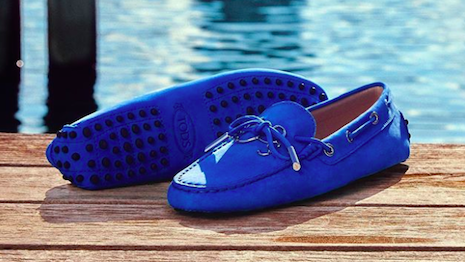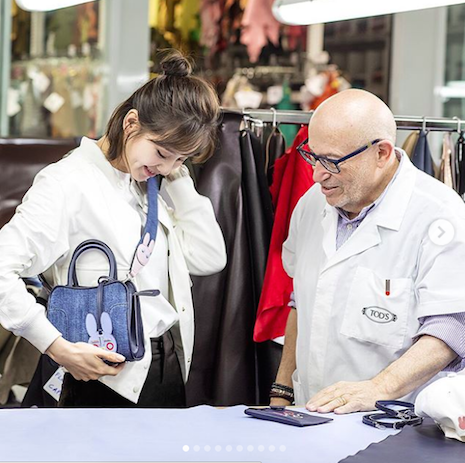 Tod's CEO Diego Della Valle believes that brands can squander a long legacy by trying to be too trendy. Image credit: Tod's
Tod's CEO Diego Della Valle believes that brands can squander a long legacy by trying to be too trendy. Image credit: Tod's
VENICE, Italy – Chasing after the latest trend may be appealing for luxury marketers in an ever-changing world, but doing so can risk the loss of a brand’s core identity.
For Diego Della Valle, chairman and CEO of Tod’s, luxury brands’ strengths lie in their legacy and the heritage they build up over many years. Speaking at the Financial Times Business of Luxury Summit on May 21, Mr. Della Valle warned that brands can dilute that legacy if they reinvent themselves too drastically and too frequently.
"Some brands that had an incredible reputation made in fashion for the last 50 years transformed their business too much and now they're only known for making rubber shoes," Mr. Della Valle said. "The question is: is it right?
"The numbers may be good but I think for me it’s a mistake because you forget the story," he said. "You don’t have the power to say how you are different than other brands on the market.
"It’s very dangerous, maybe impossible to go back from that."
Long lineage
Luxury brands are predicated on their ability to build a lasting legacy.
Some of the most iconic brands in luxury are many decades old, some over a century. With that long-lasting lineage, those brands are able to build a reputation for quality and service that consumers associate with them over many years.
At the same time, brands that are completely stagnant are at a disadvantage. As trends change, brands have to stay up to date if they want to remain current and popular.
The problem then becomes balancing between tradition and innovation. Brands cannot dilute their heritage in service of chasing ephemeral trends, which can change before brands have even finished accommodating them.
Tod's still places an emphasis on traditional craftsmanship. Image credit: Tod's
Instead, Mr. Della Valle says that Tod’s has focused on traditional craftsmanship, which has not gone out of style.
"We don’t need to defend craftsmanship; the people love it," Mr. Della Valle said. "It's important for two reasons.
"Firstly, it's our soul and it's what we do," he said. "Secondly, the market loves it."
But this does not mean that brands must eschew anything modern and new.
Instead, brands need to synthesize the old and the new. Mr. Della Valle uses as an example that Tod’s has not replaced handcrafting goods with machine manufacturing, but it has used the latter to supplement the former.
"Robots are good sometimes because they are more precise and more uniform, but precise is not always ideal," Mr. Della Valle said. "The quality is always equal, but it's okay if each product is not 100 percent identical."
Straight highway
Mr. Della Valle has a unique view of how Tod’s works to balance innovation and tradition.
He envisions the brand as a highway. The whole thing is heading in one direction that does not change, representing the overall brand direction that has roots in the past and stretches on into the future.
Yet at the same time, customers need options. For that, Tod’s collaborates with artists and designers for limited-edition collections or capsules.
Mr. Della Valle envisions these as exits off the side of the highway. They do not replace the overall brand vision or direction, yet they do allow customers new and different takes on that vision.
For example, social influencer and blogger Chiara Ferragni of The Blonde Salad showed how much she loves Italian leather goods brand Tod’s through a collaborative effort.
Chiara Ferragni of The Blonde Salad worked with Tod's on a capsule. Image credit: Tod's
Leading up to the collaboration’s unveiling, Tod’s brought Ms. Ferragni to its headquarters to learn about its creative process and craftsmanship. A video series was created and shared on Tod’s Instagram account for fans of the brand and Ms. Ferragni to follow along as she explores the atelier (see story).
This collaboration is indicative of the type of innovation and variety that Mr. Della Valle believes is key to maintaining healthy brand DNA.
"You need to have the balance between DNA, story, ideas, capsule collections," Mr. Della Valle said.


